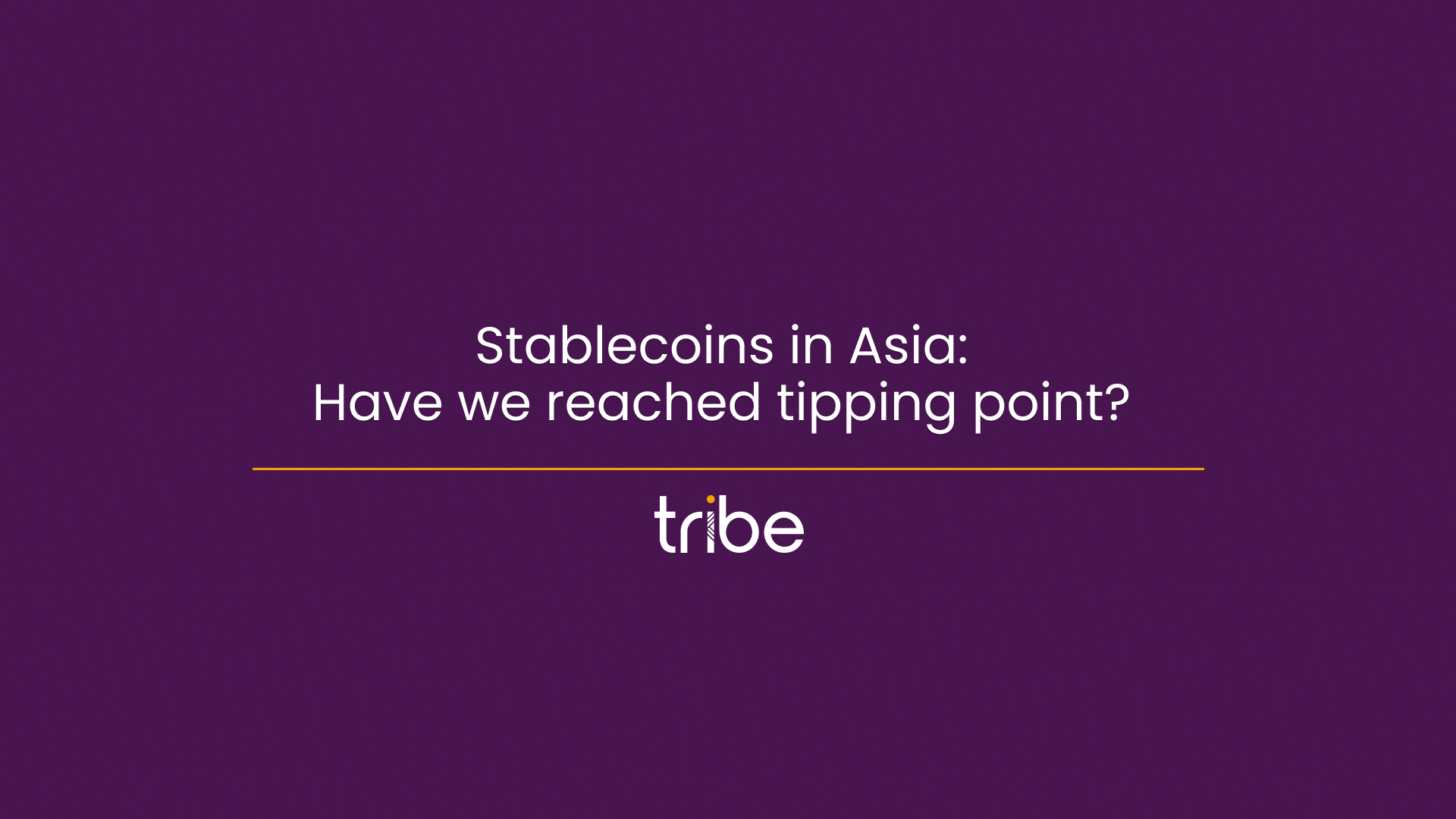Stablecoins in Asia: Have we reached tipping point?
Stablecoins are rapidly evolving beyond their crypto origins to become a cornerstone of modern payments. This transformation is particularly pronounced in Asia, where fragmented financial systems and complex cross-border requirements demand more efficient solutions.
Singapore, with its progressive regulatory stance and regional position, is leading the charge. As stablecoins reshape Asia’s payment landscape, payment providers face a stark reality – act now to remain competitive, or risk being left behind.
Transforming cross-border payments across fragmented markets
Asia’s payment landscape is notoriously fragmented. With more than 40 currencies and diverse regulatory environments, cross-border transactions are often slow, expensive, and opaque. Stablecoins offer a compelling alternative. By enabling near-instant settlement and reducing reliance on correspondent banking networks, they can dramatically improve the efficiency of trade and remittance flows.
The impact is already measurable. In Southeast Asia, 43% of B2B cross-border payments now utilise stablecoins, driven by cost-efficiency, speed, and programmability. Smart contracts present a strong use case enabling automated payment triggers based on delivery milestones or compliance checks, reducing fraud and improving transparency.
Remittances are another area ripe for disruption. Asia commands a substantial share of the global remittance market, with India receiving over $100 billion in 2022 alone. Yet transaction fees remain punishingly high – often exceeding 6%. Stablecoins can substantially reduce these costs, offering migrant workers and their families faster, cheaper, and more reliable money transfer options.
Empowering SMEs and advancing financial inclusion
Small and medium-sized enterprises (SMEs) form the backbone of Asia’s economy, but many remain underserved by traditional financial institutions. Across ASEAN, fintech adoption among SMEs is accelerating as businesses seek faster capital access and more flexible payment solutions.
Stablecoins can play a big role here. Through integration with digital wallets and fintech platforms, they enable SMEs to transact globally without the friction of currency conversion or settlement delays. Applications spanning peer-to-peer lending, invoice financing, and cross-border e-commerce all stand to benefit significantly.
The financial inclusion potential is equally compelling. In regions where banking penetration lags but smartphone adoption thrives, stablecoin-enabled mobile wallets provide a direct pathway to digital finance. This opportunity is particularly relevant in markets like Indonesia and the Philippines, where over half the adult population remains unbanked despite widespread mobile connectivity.
Navigating the challenges
Despite their promise, stablecoins are not without their risks. Regulatory fragmentation across jurisdictions creates challenges for interoperability and compliance. While fiat-backed stablecoins maintain stability through reserve backing, algorithmic stablecoins have proven particularly vulnerable to severe volatility and market collapse.
To address these risks, payment providers must invest in robust infrastructure, conduct thorough due diligence on stablecoin issuers, and collaborate closely with regulators to ensure compliance. Implementing interoperability standards like ISO 20022 will prove essential for integrating stablecoins into existing payment systems.
Preparing for the inevitable transition
The shift towards tokenised money is inevitable, and payment providers must prepare now to maintain relevance. Rather than viewing stablecoins as a threat to traditional finance, the industry should embrace them as its natural evolution. This means building stablecoin-ready APIs, integrating with blockchain networks, and developing adaptive compliance tools that evolve with changing regulations.
At Tribe Payments, we’re actively supporting fintechs and banks through this transformation. Our platform enables seamless stablecoin payment integration, card and non-card interoperability, multi-currency settlement, and real-time monitoring for comprehensive risk management. We believe the future lies in true interoperability – connecting fiat and digital currencies, bridging jurisdictions, and linking legacy systems with emerging technologies.
Stablecoins have already processed over $8.9 trillion in on-chain volume in the first half of 2025. Their market capitalisation has reached $166 billion, and monthly trading volumes are averaging $1.48 trillion, up 27% year-on-year. These figures highlight not a passing trend, but a structural shift in how money moves globally.
For payment providers, the question is no longer whether to engage, but how quickly and strategically they can position themselves for this transformation.



.png)
.png)
.png)





.png?width=137&height=90&name=Payments%20Awards%20(1).png)


.png)